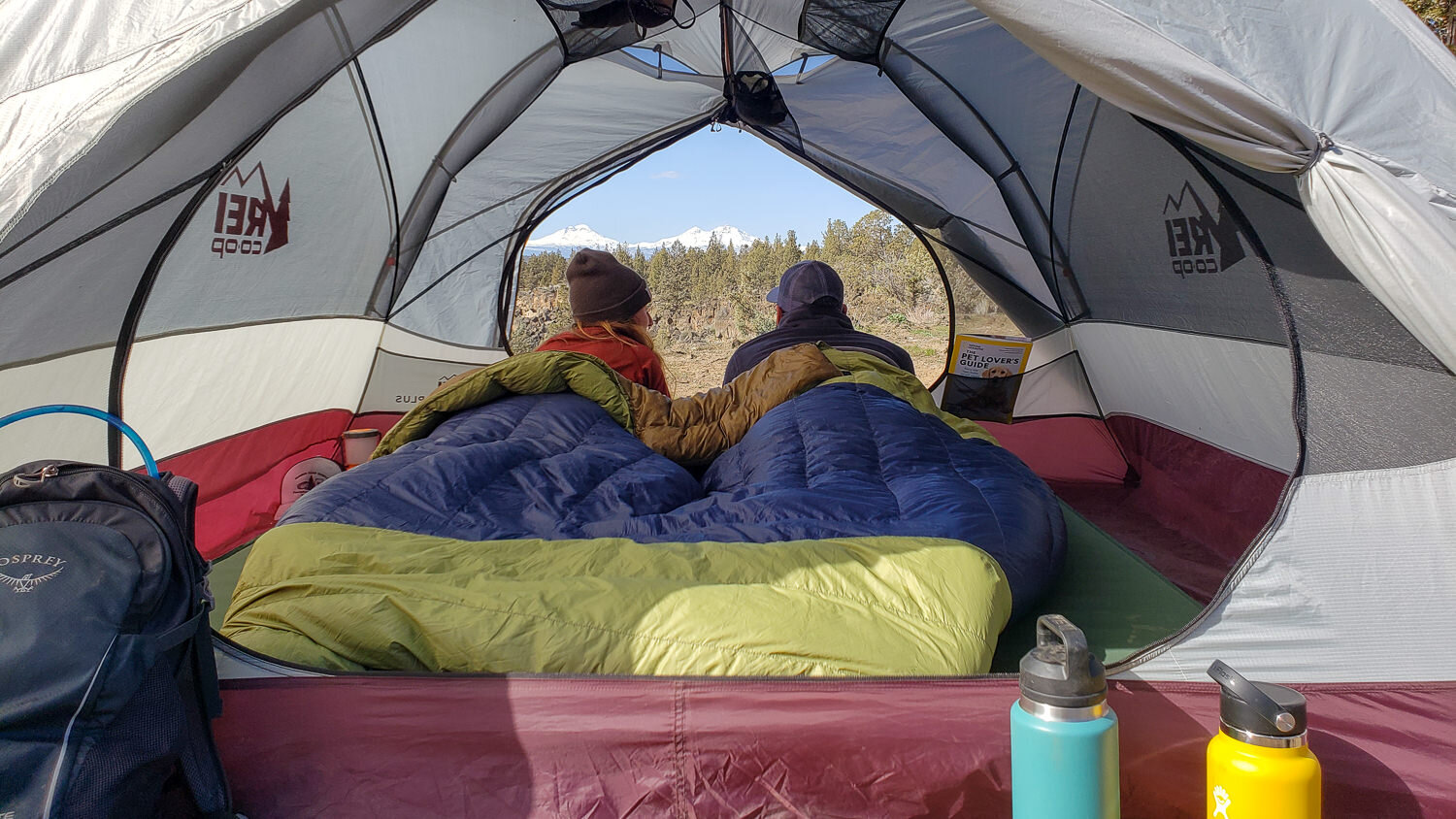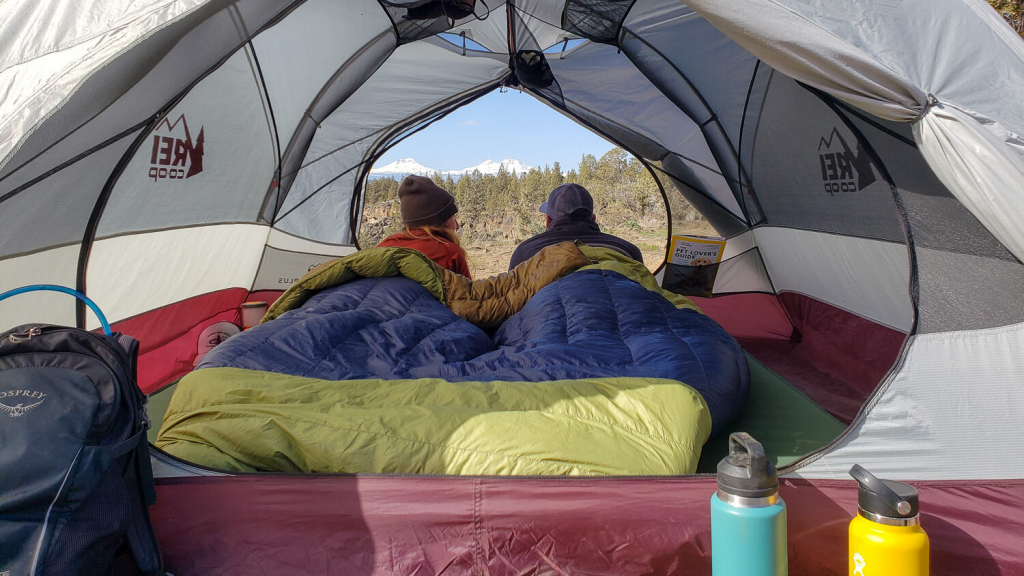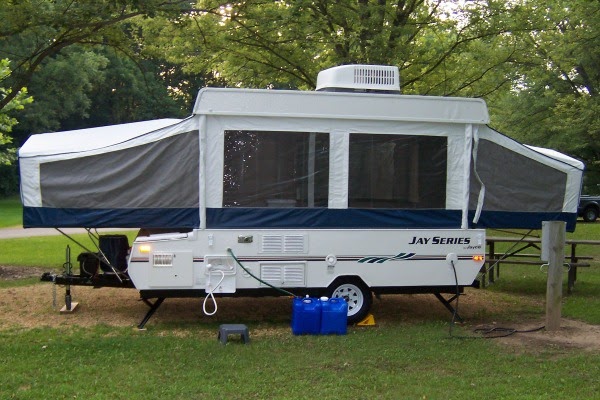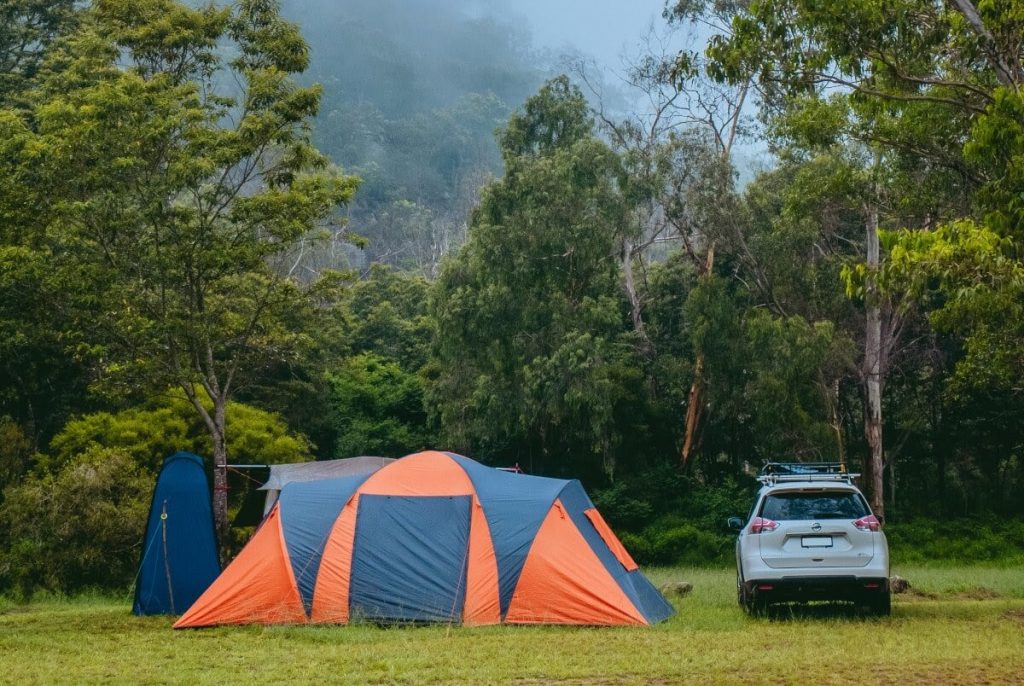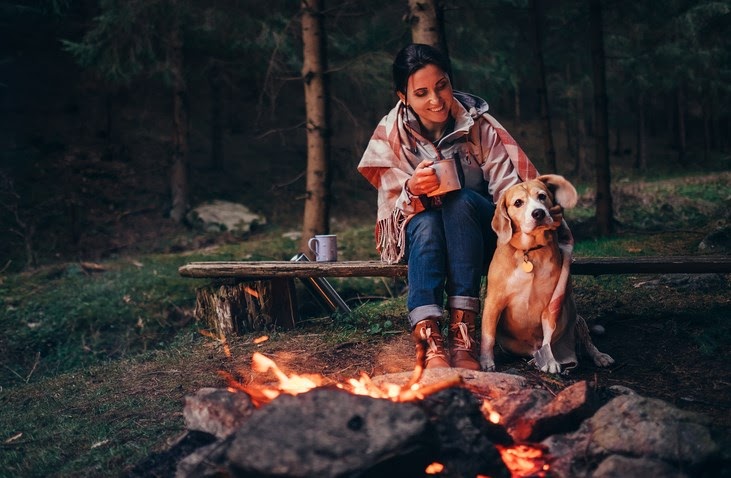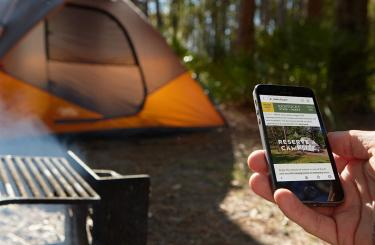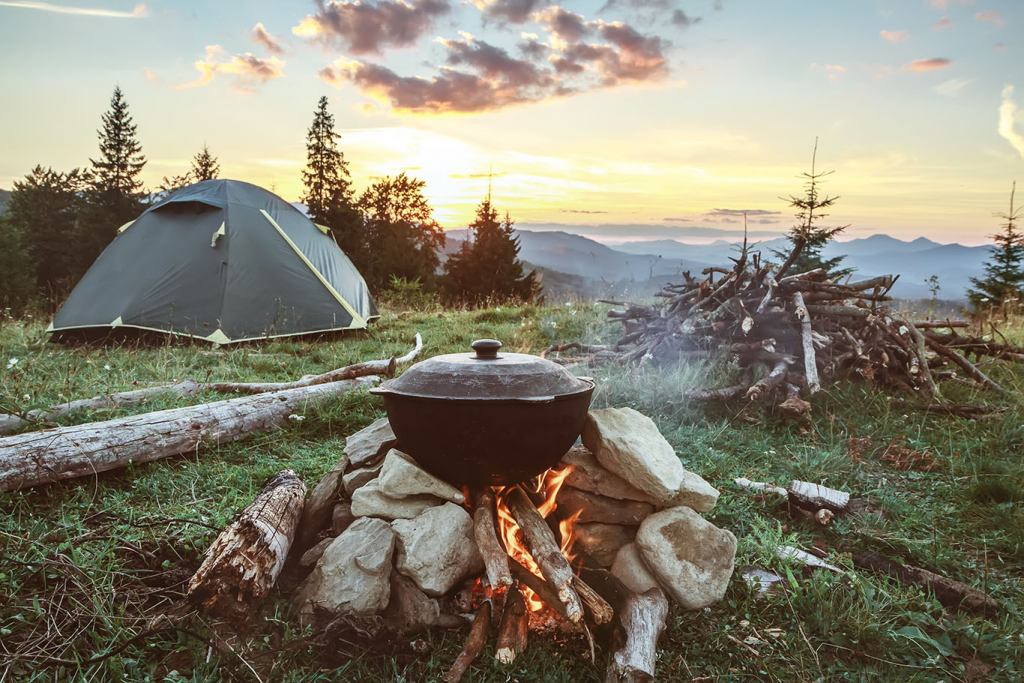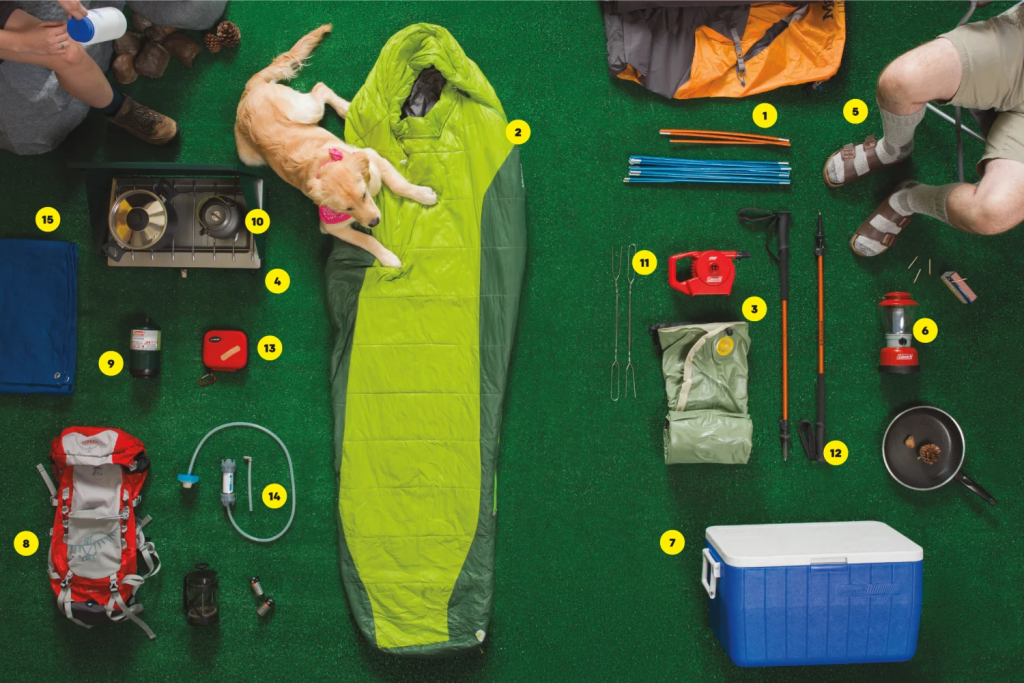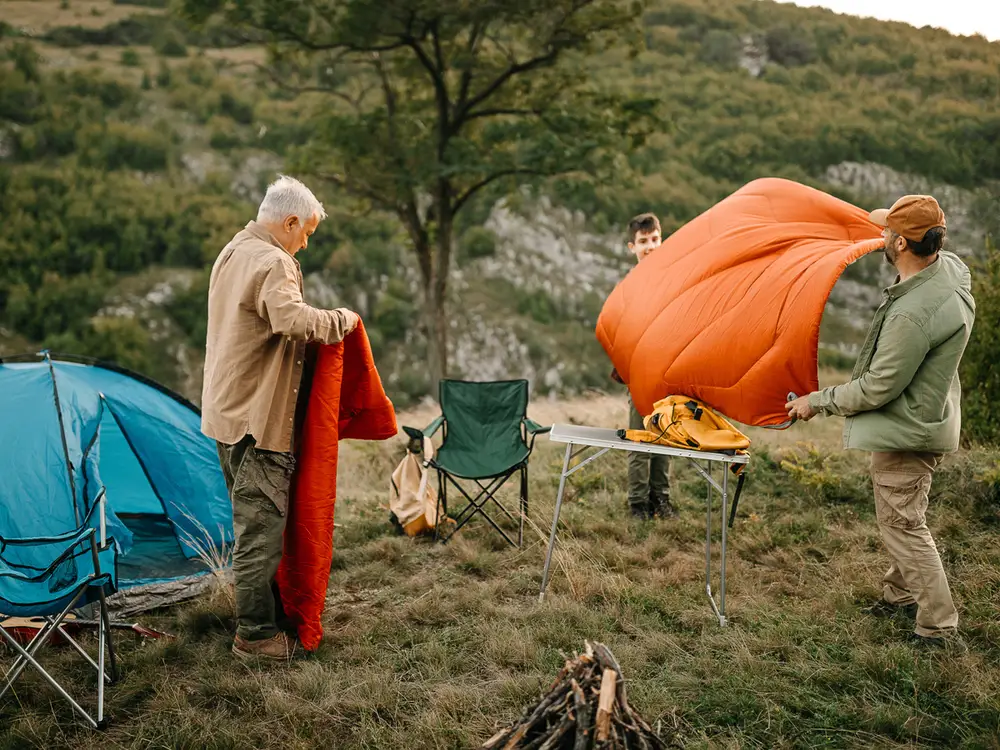You’re prepared to unwind, escape away from everything, and appreciate the beauty of nature. However, you are a newbie to camping trips so have no idea how to organize a camping vacation or even a kids camping. You have come to the right location, so don’t worry. In this post, we will show you the complete guide on how to plan a camping trip.
You’ll be heading out of the city with your windows down and ecstasy just a short drive away in five simple steps. What should you do and how can you keep it interesting? Our camping specialist is on hand to assist you. We also provide you some advice to help you get a safe and fun camping trip on your own or with your beloved friends and family. Below is our table of contents:
- 5 steps on how to plan a camping trip
- Some advice for your safe, fun camping trip
- Summary
5 Steps On How To Plan A Camping Trip
Step 1: Decide What Matters Most In The Camping Trip
The first thing you should question yourself on how to plan a camping trip was, “What exactly do I like to do?” This will influence where you go and also what you seek in the campground. Some factors to look about are:
Recreation
Would you like to go biking, rafting, or hiking? Choose a campground that is close to your chosen outdoor activities. Moreover, if you’re traveling with your family, check for nearby kid-friendly attractions and playgrounds.
If you want to go to the theater or a theme park, plan ahead of time because some attractions can be fully booked – and tickets are usually cheaper when purchased in advance. If you do not have much time to organize or book beforehand, most campgrounds will provide you with tourism information as well as flyers when you arrive.
Tent/RV
Have you had a camper or you’ll be sleeping in a tent? It’s critical to select a campground with adequate parking for your vehicles.
Camping style
On-site amenities such as bathrooms, power hookups, or running water are not usually available. This is an example of a detail that should not be missed during the planning stage. There are a variety of camping options – ranging from luxurious accommodations to lightweight minimalism. Consider what you’ll do during your vacation and what should leave behind.
Would you truly need to escape from everything and leave the laptop and phone at home, or do you just want to have access to Wi-fi? Do you relish the lack of amenities or can’t tolerate being separated from the hair straighteners? There’s no good or bad; it is your vacation, and you make the decisions. Our recommendation is to choose the option that best attracts you.
The more you go camping, the more you’ll figure out what kind of camping you like.
Solo or in a group
Consider the size of your group and the diversity of their interests. If you’re traveling with a tiny number, a single campground may suffice. Family cabins may be the best option if you’re going with a big number. Also, learn what everybody’s expectations are then you can choose a location that everybody will enjoy.
Step 2: Make A Reservation For A Campsite
When To Go
When to go will be the most crucial factor when you start wondering how to plan a camping trip. Because you’ll be staying outside, the weather and season will now significantly impact an overall camping adventure.
Olympic National Park, for example, receives approximately 150-inch rain every year. It’s nice to wake up to the sound of rainfall on the tent.
Consider the identical scenario, except your whole camping trip is spoiled because of drenched and soggy equipment from the evening prior. Not only will wearing damp garments be unpleasant, but sleeping in a tent full of them would be far worse.
When offices are quieter and children are now out of school, many parents have more leisure to go camping in the summertime. This appears to be a wonderful idea at first, but also means more people, especially in major campgrounds or National Parks. Why don’t take a break during the peak season if you’re searching for quiet time?
One of the first time camping tips for you is to try backcountry camping in those national parks.
Where To Go
Campgrounds are divided into two categories: public and private. Both have benefits, but selecting a good option might be difficult. That’s why using campground ratings and reviews as a guide is a fantastic idea. Consider whether you’ll be sleeping in an RV, a camper, or a tent. Some campsites are more accommodating to tents than others.
Similarly, some campgrounds provide all of the required hookups and amenities for campers. Are you concerned about having a shower with flush toilets, and are you willing to rough this for Saturday? This is an important consideration to most campers, and now a campsite guide will offer this information.
You could also go to public parks that are often rustic and provide a range of outdoor activity opportunities, or modern campgrounds, which may include a pool, store, or game room. Some campgrounds need reservations, while others provide this as a choice or operate on a first-come, first-serve basis.
If you think it’ll be a crowded weekend—particularly Labor Day, and Memorial Day—make an appointment or arrive early. Another alternative is to attend a camping-themed festival. They’re a lot of fun, and they’re right outside your tents, with music as well as other activities.
Who Should You Travel With
Anyone can go so that you can bring anybody you want, and it’s also enjoyable for you. Camping is a nice method to get kids outside and educate them on self-sufficiency at the same time. Another advantage of outdoor activities was that you could always frequently bring the pets with you.
Budget
Make a budget for yourself and follow it. As we’ve already indicated in this article, if you’re careful with spending money, you can take the family of four camping for two weeks at the most friendly cost.
What you’ll need to set aside money for:
- Transportation (transport fees or petrol)
- Fees for camping
- Anything you don’t want to borrow in terms of equipment and gear
- Food
Any extracurricular activities, such as going out, day trips, and so on.
- Unexpected costs – attempt to leave a little buffer for these types of expenses.
Transport
What are your plans for getting there? It will affect the amount of luggage you can carry, especially when cycling, walking, or taking public transportation. How many passengers would be in the car, as well as how much space could you have for anything you’ll need? You should think about getting a roof box or a roof rack.
What Is The Best Way To Locate The Ideal Site For Your Camping Trip
The search for the ideal campground begins once you’ve decided what you want to have in your camping experience. Here are some pointers to help you select the ideal location:
- Ask your friends for recommendations.
- Check out some campsite websites for descriptions.
- Contact directly to the campground for more information or to resolve any problems or inquiries.
- Research the location:
Nothing is more frustrating than arriving at a campground and discovering there isn’t much to do nearby. It’s important to look into this ahead of time if you’re looking for a decent local bar, kid-friendly activities, or maybe even beaches.
Of course, many individuals prefer the peace of staying on-site, in which case it’s definitely advisable to plan your trip ahead of time.
It’s an easy two-step process to reserve your campsite:
- Check availability—during popular times of every year, such as summer and also the holidays, you may need to book several months ahead of time.
- Take the easy way out and reserve your campground online. Simply select your preferred dates and campsite, then reserve your slot.
Step 3: Create Your Menu For Your Camping Trip
The meal is typically the most difficult part of arranging a camping vacation on how to plan a camping trip guide. However, preparing meals outdoors wasn’t as limited or hard as this may appear; with the correct tools and containers, you can prepare anything from meats to noodles or omelets.
Preparation
Whereas a lot can be accomplished at the campground, preparing a few items at home could save work and time when you’re out in the woods. You can, for example, chop vegetables and fruits and slice meats at home.
To make extra room inside the coolers, arrange foods in smaller storage and soak protein inside a bag and marinade to transport easily.
Spice your food up
It doesn’t imply you can’t utilize your favorite seasonings just because you are eating outside. Remember to bring the essentials, such as cooking spray, oil, pepper, or salt, and any extra seasonings.
Food storage
The meal will almost certainly include foods that must be kept cold. Arrive with coolers that are filled with ice, but check with the campsite ahead of time to see if they sell this stuff or if you’ll need to go somewhere else to get more. If ice isn’t readily available, try serving perishable goods in the first days.
Cooking tools
An attached grate will come with most fire pits that enable you to prepare food on the open flame. However, as an alternative and for cooking things that don’t fair over the flame, consider carrying a stove for camping with propane.
Cups, dishes, pans, pots, tinfoil, sealable containers, spatula, utensils, tongs, and knives are all essential kitchen goods.
Step 4: Pack Your Belongings
The best tip on how to plan a camping trip is to bring a camping list with you so you won’t forget anything. It may appear straightforward, yet this is in which many individuals go astray. Please ensure you have everything you need, including toothbrushes, toiletries, wellies, pillows, camping pad, sleeping bag, and a tent.
A stove for camping is also necessary if you plan to prepare food on the spot. A big camping rucksack with multiple buckles and compartments for clipping and storing things like your sleeping bag and camping mat is a wonderful investment when you’re not traveling by car. To get started, below are a few essential requirements:
Shelter
The tent is essential, but for added shade, consider the pop-up gazebo. Bungee cords or extra ropes and tarps should be brought along with them. If you’ve not been camping previously, especially camping with children, you’ve also probably never set up a tent. This is quite acceptable; everybody has to begin somewhere!
Take your tent into the park or garden and practice taking it down and setting it up once you’ve bought it. When you get confused, remember that YouTube is your best friend! Among the most difficult aspects of putting up a tent, believe this or not, is having to put it back into the bag, therefore pay careful attention.
Budget tents, such as those made by Coleman as well as Ozark Trail from Walmart, are excellent at keeping rain and bugs out. However, they are often very hefty and do not fit into small spaces. You don’t have to pay a bunch to change to a more high-quality brand. A similar model from a higher-quality brand begins around $150, but a simple tent for four persons can be much cheaper than that.
We can’t discuss tents without mentioning tent sizes. The sizes of tents are similar to the sizes of caskets. A tent for four persons can accommodate four individuals of average size lying beside each other. If you’d like more space to hang out, change clothes, or roll around in, you’ll need a tent that’s larger than the number of persons you’ll be bringing.
Sleeping
You’ll require air mattresses, camping mats, blankets, pillows, and sleeping bags depends on the individual’s sleeping scenario.
A sleeping pad’s primary function is to give cushion. The job of providing insulation is less clear. A pad reduces the amount of heat lost from the surface you’re resting on since your bodyweight compressed its lofted insulation on the sleeping bag’s underside.
As a result of this, and also because they frequently fail after only one to two usage, we do not suggest using any inflatable air bed. A thinner, foam air sleeping pad will actually make you sleep more pleasantly. Spending more money will help you live longer.
The sleeping bags could be deceiving as well. It’s not uncommon to see the very cheap ones listed with incredibly exaggerated temperature ratings from big-box merchants. What is our recommendation? Purchase a reputable sleeping bag or bring a cheap one that is rated for far colder temperatures than you will encounter.
Anything sold by a low-end brand that promises to be comfortable in zero-degree weather should work down to the mid-thirties. However, just in the scenario if it isn’t, keep a spare blanket from your home.
Miscellaneous
Something to wash your dishes in, soap, napkins, paper towels, logs, water bottles, maps, waterproof matches, warm clothes, first-aid kit, toothpaste, toothbrushes, and trash bags should all be included. And if you intend to get a fire, you will require a stove. It will let you make coffee swiftly and easily in the mornings.
It’s fine to use disposable utensils, bowls, and plates. Just ensure you have enough garbage bags to finish the job. Investing in such a collection of easy-to-clean, reusable stainless steel camping dishes is a brilliant idea if you prefer to be less harmful to the environment. A pot, an iron pan, a spoon, and tongs from home are all recommended.
In recent times, a lot of money has been spent on selling luxury coolers. You don’t require one. Before you depart, freeze everything that could be frozen, pack the cooler tightly, then try to limit how long and how often you open it. For this reason, it’s a good way to offer a separate cooler for drinks only. As the ice packs melt, they will not soak the food in the water.
Prepare For Bad Weather
Even though the weather report says it will be sunny, you should be ready for something worse. Here are some helpful hints:
- Waterproofing: Any decent outdoor store will sell weatherproof spray as well as other options for maintaining your tents dry.
- Back up your supplies: If it rains, ensure you bring wellies, and once you do bring wellies, the very last thing you will want is mud in the tent or car. The black bags seem to be perfect for this, plus they can also be used as emergency tent coverings if the tent gets a hole or leaks and shoe protectors when you forget the wellies!
- Make a little leisure area: In bad weather, the very last thing you want is to spend the entire day inside the tent. A modest gazebo or umbrella with side coverings can provide shade, allow you to get some fresh air, plus serve as a community spot for wet shoes.
Make Provisions For Nice Weather As Well
Similarly, while it’s important to plan for bad weather, it’s equally important to plan for sunny! Make sure you have enough sunscreen, light clothing, umbrellas, hats, and sunglasses to protect yourself from the sun’s harmful rays. If you don’t bring sunscreen, some campsite stores will stock it during the summer season.
Step 5: Set Up Your Camp
Our final step on how to plan a camping trip: Set up your camp! When you arrive at the campground, check in at the camp host or the office. Find the right spot that appears to be a good place to spend the weekend. The sites with some of the most cover are the most desirable, so arrive early.
After that, you’ll build up camp. Choose a good spot for the tent, layout the cooking materials, and get comfortable.
You’ll immediately discover there are some obnoxious campers. Don’t make the same mistake as them and gain knowledge on what to do and not to do on any camping weekend. This includes things like respecting your neighbors, keeping the site tidy, and being aware that wildlife could be around.
Once you are ready to depart and return home, make sure your site appears just as it did when you came (or better). You should carry your rubbish with you, thoroughly dowse the fire, and start packing all of your belongings. Unpack everything when you arrive home and then let them air out and dry before storing them securely.
Some Advice For Your Safe, Fun Camping Trip
To ensure a fun and safe camping trip, you need to know the following:
Why Choose Camping
It’s cheap, enjoyable, and there are thousands of areas near you, regardless of where you live in the country. As this is the first camping vacation or one you haven’t taken in a long time, we recommend car camping.
When compared to something like a human-powered expedition, bringing the car will allow you to become more comfortable and save money on supplies. You can increase the difficulty by selecting a more remote location and organizing entertaining day trips far from camp.
It feels great to return from a strenuous trek or bike ride and relax with a tasty, easy meal, a cold drink, and a pleasant night’s sleep outside.
What Are The Potential Dangers
Bears and other wild creatures are unlikely to harm you, however, it’s a good reason to keep your camp clean, with foods safely stowed in storage containers or coolers throughout the day and within a closed car at night. Animals ranging from donkeys to crows like stealing people’s food, resulting in a massive mess at your campsite.
Cross-contamination among your mouth, going to the toilet, and raw food should be avoided at all costs. Hand sanitizer should be used frequently, and hands should be washed if they are noticeably filthy.
On a similar note, cooking outside after dark presents its own set of obstacles. Bring a basic meat thermometer with you and check everything before serving to minimize undercooked meat.
Whether you are in a campsite or setting up your dispersed campsite, you must be careful about leaving no trace. Prepare to defecate (follow LNT requirements) and inspect your campground for trash, whether yours or somebody else’s, before leaving.
How To Make It More Pleasurable
You can’t go wrong if you think of camping as a fun BBQ or dinner gathering in a lot more beautiful setting. Assign jobs and responsibilities to everyone to ensure that they are all invested or involved in the effort. Pack warm clothes as well as sleeping gear, avoid insect bites and keep everything clean to eliminate the obvious sources of pain.
Don’t overlook the music. Whenever in doubt, set up camp near a body of water. We also recommend that you go camping somewhere where you can have a campfire on your first traveling vacation. Seasonal and geographical limits apply, and you should expect harsh punishments if you light a fire in an area in which it is prohibited.
Is It Responsible And Safe To Camp
Even when places allow ambiguously, and frequently contradicting, recommendations on starting the economy, the number of deaths continues to rise. As a result, it is up to us, ordinary people, to do all necessary precautions to prevent the disease from spreading.
The disease can keep spreading between groups and regions again in near future, and small, rural settlements that prefer to dwell near public camping sites remain particularly vulnerable.
As a result, the best strategy for organizing a camping vacation is to first check and comply with all local and state restrictions, then arrange your trip as near to home as much as possible. Limit interaction with potential disease vectors, such as grocery stores and gas stations, avoid large gatherings and use proper social distancing techniques.
Masks may assist keep the diseases from spreading among your group if you’re camping with folks who aren’t part of the quarantine program. Keep in mind that it’s not just your health that’s on the line. It is the wellness of vulnerable groups, as well as the condition of the entire world. Camp in a responsible manner.
Summary
https://www.youtube.com/watch?v=xUqTgNJgWUs
Finally, let someone know where you will be as well as when you expect to return. It’s critical that someone knows when they will hear from you as well as where they can reach you if something unusual occurs. And that’s the end of our complete guide on how to plan a camping trip.
There seem to be a lot of nuances to deal with when it involves preparing a car camping vacation. These five steps can assist you in making things easier and more controllable until you find your rhythm. So pack your bags, get in your car, and have a great journey.

